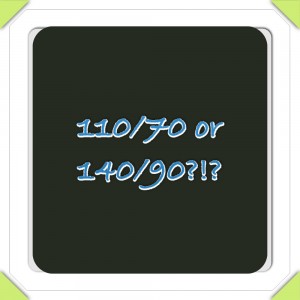People are getting their blood pressure checked before every appointment they have with HCPs, but I feel like many times people are told what their pressure is, then they are reassured that “it’s good” or “we need to watch that”…and’s that’s it! It seems to be a big question to many people of what their blood pressure should be and what the numbers actually mean? It’s a shame that more Healthcare Practitioners (HCP’s) don’t explain it to you, but increasing your own blood pressure (bp) IQ is a great place to start to improve your wellness!
What is the top number?
If you are told that your bp is 120/80, the top number (120) is also known as the systolic pressure. Basically, every time your heart beats, it is using pressure to force the blood from the heart our to your hands, feet, head, and all of those vital organs that help you to live. Blood that leaves the heart to get to all of these other areas, is full of oxygen, so that the oxygen can be used at those sites far from the heart and lungs, and the blood travels through arteries to get there. So, the force that is required by the heart to push that blood out through the arteries is your systolic blood pressure. A systolic blood pressure of 120 mmHg (millimeters of mercury) or below is considered good. A systolic pressure of 121-139 is considered pre-hypertension or “borderline” hypertension, and any reading greater than 140 is considered hypertension (AKA high blood pressure).
What is the bottom number?
If your blood pressure is 120/80, then 80 is your diastolic pressure (the bottom number.) Your diastolic pressure is the pressure in your arteries between your heart beats (so when the blood is not rushing out from the heart). And, similar to high systolic pressures, high diastolic pressures can also be a sign of decline in health and we need to make some changes. A diastolic pressure less that or equal to 80 is good, 80-89 is pre-hypertension, and 90 or higher is considered diastolic hypertension.
What does this mean?
If you are in the “pre-hypertension” zone, you can sometimes make some healthy lifestyle choices that will help to decrease your pressures like eat a low salt diet, decrease your fat and cholesterol intake, start working out (or work out more), and drink more water. Also, cutting out red meats and eating more lean proteins can help to decrease the fat and cholesterol intake and make some pretty big changes in your blood pressure. Sometimes it is also related to stress, so learning some de-stress techniques, doing yoga, meditation, acupuncture, can all help with decreasing stress and anxiety and do wonders for blood pressure. Work with your HCP to create a plan, but if these measures don’t work, and sometimes they don’t because of genetic high blood pressure, then you may need to start a medication to help regulate those pressures.
How often should I get checked?
If you are healthy, and your blood pressures are normally below the 120/80 mark, with no other health issues, you can go two years between getting checked ( I usually suggest annual screening, and even just checking your blood pressure at the pharmacy). If you are pre-hypertensive, you should go every 6 months just to see if the interventions you are making are having an effect on your pressures. And if you are hypertensive and starting medications, your HCP may have you getting your blood pressures checked regularly while you are starting your medications to make sure you are getting the correct dose and then you don’t need to check as often. My personal suggestion, if you are on any sort of blood pressure regulation medication is to purchase a blood pressure cuff (electronic) from the pharmacy, and have it just to check your blood pressure every once in a while to make sure that you are on the right track! Plus if you ever get symptoms like light-headedness or headaches that won’t go away, you can check quickly to see if your blood pressure (either low or high) may be the culprit!
It is a good idea to know what your blood pressure is, and now you know what those numbers mean. Talk to your HCP if you have any concerns, or are worried about treatment options, they will work with you to find the best treatment that works with your lifestyle.
Yours in Good Health
B


